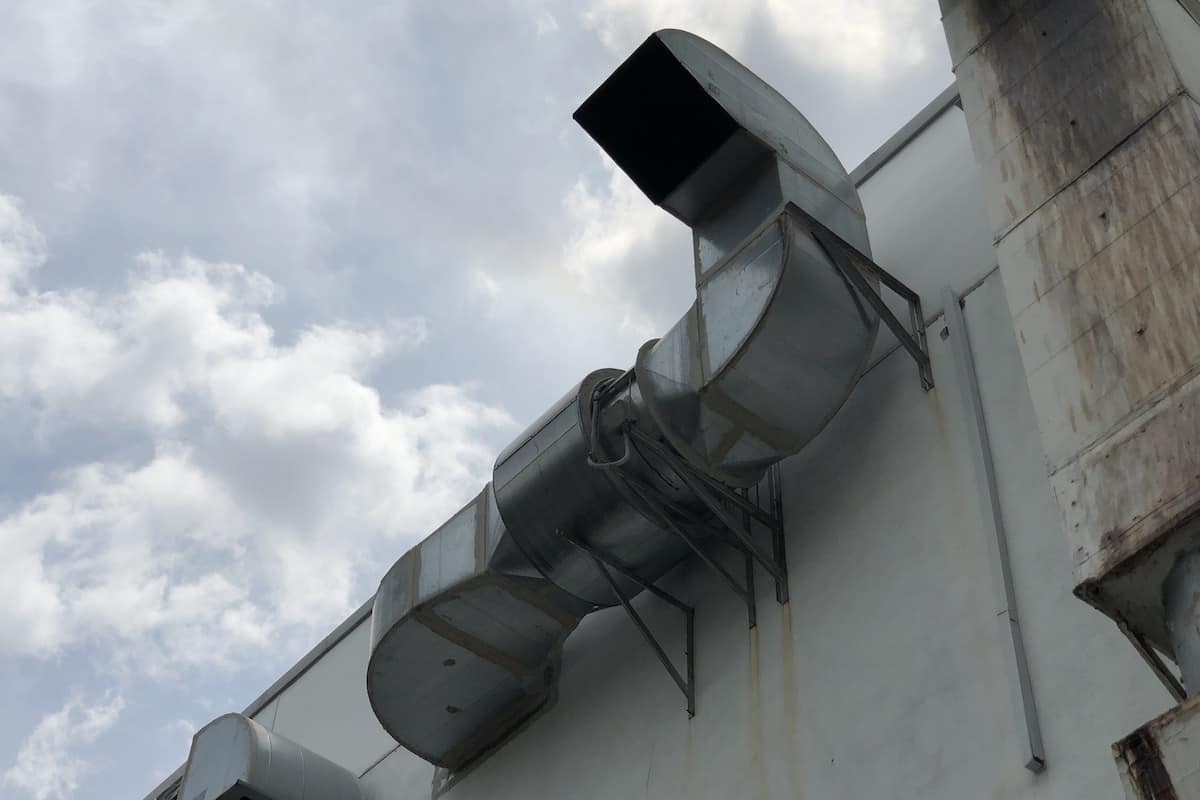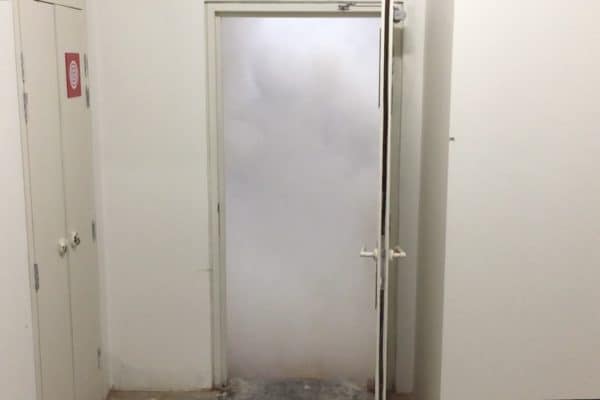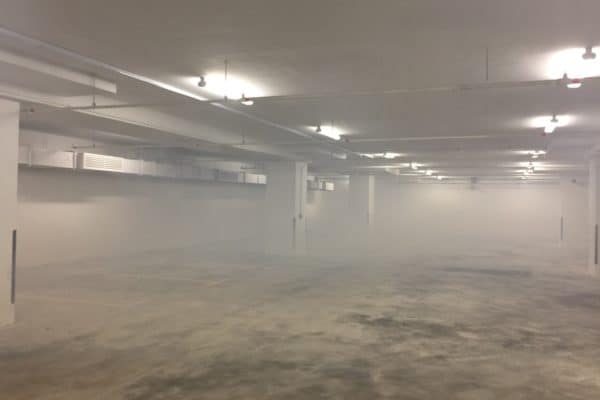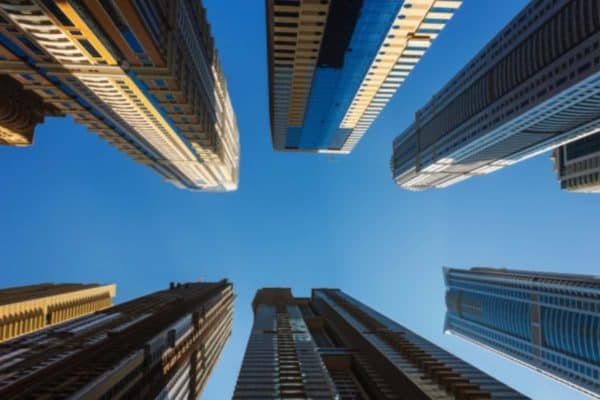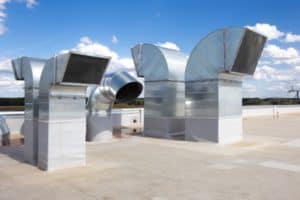5 Types of Ventilation Systems (Pros & Cons)
Ventilation is important for our well-being. Houses and buildings need fresh air to maintain good indoor air quality. So, what are the types of ventilation systems available and what are their pros and cons?
Generally, there are 5 types of ventilation systems as follow:
- Natural Ventilation
- Air Conditioner Fresh Air Intake
- Kitchen and Toilet Exhaust System
- Energy Recover Ventilator
- Roof Turbine Ventilator
Each type of ventilation system has its advantages and disadvantages. With the right application, they can provide us with the fresh air we need to stay refreshed.
1. Natural Ventilation
Natural ventilation can be achieved by simply opening windows and doors to let the outdoor air come inside the house naturally. However, it needs to be done properly in order to maximize ventilation effectiveness.
In homes, we can maximize natural ventilation by opening the front door and the back door. This creates a path for the fresh air to enter from the front of the house and exit at the back of the house.

Ideally, we want to let the fresh air travel through the house diagonally so that it replaces as much air in the house as possible. If the wind is not blowing strong enough, reducing the intake area can increase the air velocity and thus, maximize the ventilation effect.
In high-rise residential apartment buildings, architects and engineers often deploy natural ventilation for the corridor by having either large openings (no walls) or plenty of open windows. Whereas in commercial buildings, natural ventilation is often not used because it affects the exterior aesthetic of the building and thus, mechanical ventilation or forced-air system is deployed.
However, in some commercial buildings (and many residential buildings), the basement smoke ventilation system uses mechanical for the exhaust and natural for the fresh air whenever possible to minimize cost.
The primary advantage of natural ventilation is its low cost. However, it requires a lot of manual work and you need a large opening to be able to ventilate effectively. In most cases, you need to leave the front door and the back door fully open.
On top of that, natural ventilation introduces unfiltered and unconditioned outdoor air that can both make your house dustier and increases the humidity level. Hence, natural ventilation is generally not feasible when the outdoor air quality is poor and when you need heat in winter.
What’s more, you cannot have air conditioning and natural ventilation at the same time as the uncontrolled amount of fresh air will introduce extra loads that your air conditioning system can’t handle.
In the meantime, I would like to inform you that you can learn quicker by getting my HVAC Begin (eBook) if you’re a beginner. But, if you have a year or two of experience, then I would suggest you consider my HVAC Basics (eBook). Nonetheless, I encourage you enroll in my HVAC Beginner Course: 10 Days to Become Competent in HVAC if you want to equipped yourself with a complete set of basic HVAC skills.
HVAC Beginner Course
Learn the most basics and foundational HVAC skills including cooling capacity calculation, equipment selection, duct sizing, pipe sizing, exhaust fan sizing, controls, electrical and more.
2. Air Conditioner Fresh Air Intake
The most effective way of introducing fresh air to ventilate houses and buildings is by having a fresh air intake on air conditioners.
Fresh air introduced via air conditioners is both filtered and conditioned. This means that even when the outdoor air quality is poor, you can still have fresh air ventilation in your house.
Different types of air conditioners have different types of fresh air intakes. So, let’s break it down to 3 different types of air conditioner fresh air intakes.
Air Handling Unit (Air Handler)
Fresh air intake through air handling units (AHUs) is the most common one. Usually, the fresh air intake is located at the return side of the air handler.
The benefit of having a fresh air intake on air handlers is that the outdoor air can pass through filters instead of directly going into the house. This filtration process ensures that the fresh air that goes into your house is clean and free of contamination depending on the filtration grade of your air handler.
In addition, the outdoor air also passes through the cooling coil of your air handler where its temperature and humidity get reduced (for cooling) before it goes into your house. Hence, the humidity level in the house can be controlled.
To clarify, the fresh air intake on air handlers is not the same as the fresh air intake on furnaces. Gas furnaces need sufficient oxygen for efficient combustion. Hence, they introduce fresh air for the gas burning process. Fresh air through furnaces never goes into the house.
However, conventional furnaces that don’t have a dedicated fresh air intake draw air from the surrounding. Without fresh air vents, they create a negative pressure in the house and the outdoor air naturally sips into the house through door and window gaps. Nonetheless, they don’t provide effective ventilation, especially for air-tight houses.
Introducing fresh air through air handlers is the best way to provide ventilation for a whole house as the filtered and conditioned outdoor air can mix with the return air and supply to every corner of the house via ductwork.
Ducted Mini Split
Many homeowners are getting into mini splits nowadays. Particularly, ducted mini splits allow you to introduce fresh air through its return side, much like air handlers.
Ducted mini splits often have a return air plenum box to which you connect the return air duct to. Additionally, you also can connect a fresh air duct to it.
Similarly, fresh air introduced via ducted mini splits is filtered and conditioned. However, filters on ducted mini splits are usually not as good as AHUs. Most of the time, they are just basic media air filters meant to trap dust.
Nonetheless, when fresh air is introduced through air conditioners, the filters require more cleaning as they will capture more dust.
Other than that, the ceiling cassette type of ductless mini splits also can introduce fresh air. However, the fresh air sometimes bypasses the filter, leaving the air unfiltered but conditioned.
The introduction of fresh air increases the load (power consumption) of air conditioners. With ducted mini splits, fresh air can be introduced to rooms that are necessary only which saves energy.
Window and Portable Air Conditioner
Some window air conditioners and portable air conditioners allow the introduction of fresh air.
Window air conditioners with a fresh air intake vent can force the outdoor air into the house. However, many of them do not filter and condition the air.
On the other hand, dual-hose portable air conditioners introduce the outdoor air through a dedicated hose while the other hose is used for the exhaust air. Such portable air conditioners provide filtered and conditioned fresh air to the house.
3. Kitchen and Toilet Exhaust System
In the kitchen, small kitchen hoods are used to exhaust out the cooking smell. Sometimes, a wall properly exhaust fan is used instead of a kitchen hood.
However, in commercial restaurants, the kitchen has a dedicated and powerful kitchen exhaust system. Such an exhaust system has a high airflow rate and thus, a dedicated fresh air system (makeup air) is needed to ensure the effectiveness of the exhaust system.
Sometimes, kitchen exhaust systems can also be used as smoke extraction systems.
On the other hand, toilets without a window are almost always legally required to have a ventilation fan. Most of the time, toilet exhaust systems don’t need a dedicated fresh air system as the makeup air comes from the adjacent room.
Regardless, both kitchen and toilet exhaust systems are not strong enough to cause a negative pressure in the house and thus, not able to attract outdoor air for ventilation purposes.
4. Energy Recovery Ventilator
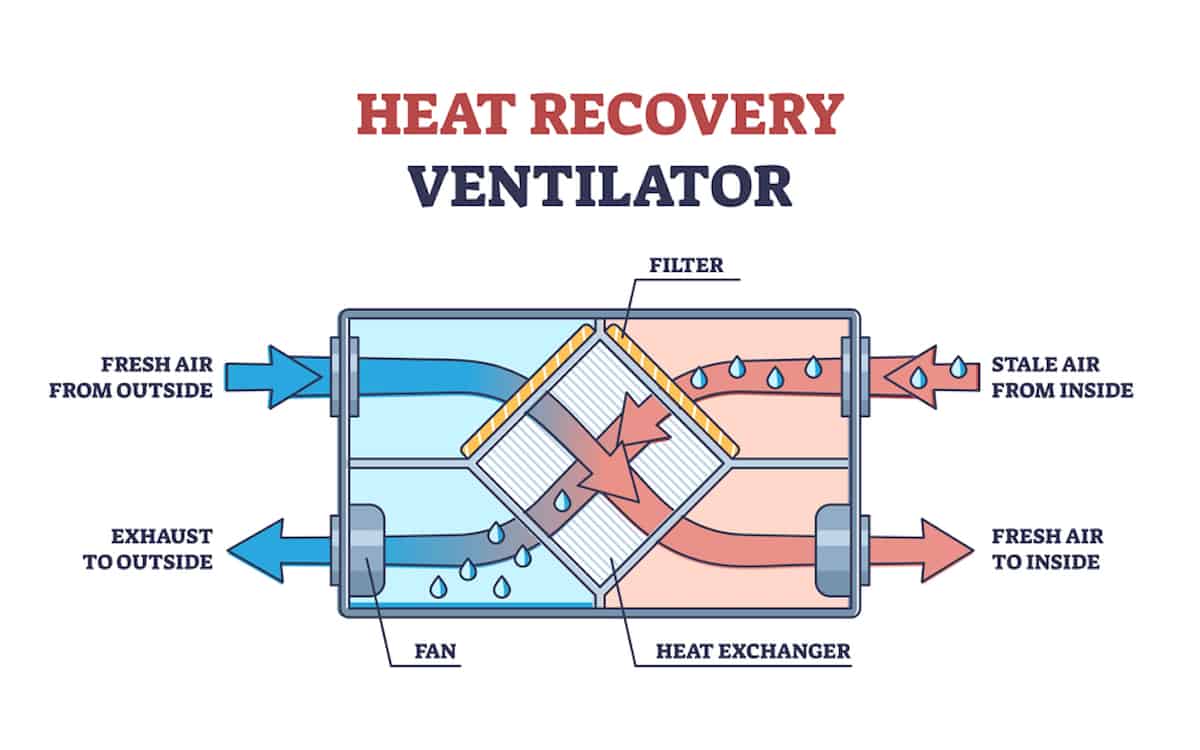
Houses and buildings can install a dedicated ventilation system that is comprised of a fresh air system and an exhaust air system for better indoor air quality.
But, when the air conditioning system is running simultaneously, exhausting out the cold air is a waste of energy. Hence, an energy recovery ventilator (ERV) can be used to transfer the energy from the exhaust air to the fresh air thereby minimizing energy wastage.
Introducing fresh air through a supply-only system like the air handler fresh air intake in houses with very good airtightness can create a positive pressure within the house as the extra outdoor air that is forced into the house can’t escape at the rate at which it is introduced.
Hence, a balanced ventilation system that has an intake and exhaust is needed.
Houses with an air handler that has a fresh air intake can install a separate exhaust air system with an ERV. The ERV will recover some of the energy from the exhaust air and transfer it to the fresh air.
The benefit of ERVs is much more appreciated in large buildings where a significant amount of total energy can be recovered from hundreds of toilet exhaust systems.
5. Roof Turbine Ventilator

Roof turbine ventilators work by the principle of hot air rises. In addition, they are also powered by wind.
In summer, hot air rises to the top of the house. With a 5°C (9°F) difference between the indoor and outdoor temperature, the roof turbine ventilator will exhaust out the hot air while the colder outdoor air naturally replaces the hot air by sipping into the house through door and window gaps.
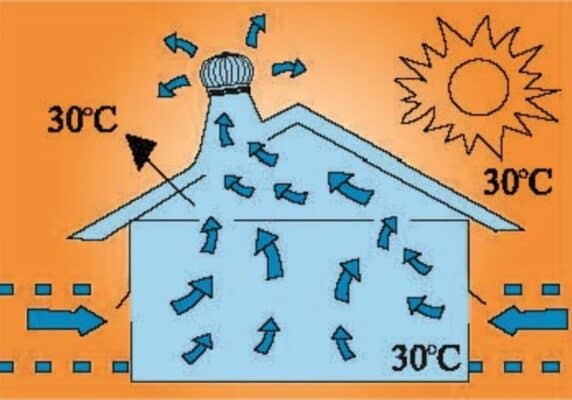
Roof turbine ventilators also work when there is a wind blow. A 20″ diameter turbine ventilator can exhaust air at a rate of 1500 cfm @ 4 mph light breeze wind speed, allowing a 2000 sqft house to have an adequate air change per hour.
However, roof turbine ventilators possess a few problems. First, they tend to exhaust out heat in the winter when the wind blows the strongest. Second, they introduce unfiltered and unconditioned air into the house as well.
Thus, roof turbine ventilators are more suitable for places with good outdoor air quality and nice weather.
Lastly, consider my HVAC Begin (eBook) if you’re a beginner and you want to have a foundational knowledge in HVAC. But, if you have a year or two of experience, then I would suggest you consider my HVAC Basics (eBook). Nonetheless, I encourage you enroll in my HVAC Beginner Course: 10 Days to Become Competent in HVAC if you want to equipped yourself with a complete set of basic HVAC skills.
HVAC Beginner Course
Learn the most basics and foundational HVAC skills including cooling capacity calculation, equipment selection, duct sizing, pipe sizing, exhaust fan sizing, controls, electrical and more.
If you have anything to add (or ask) about this topic, leave a comment down below!


